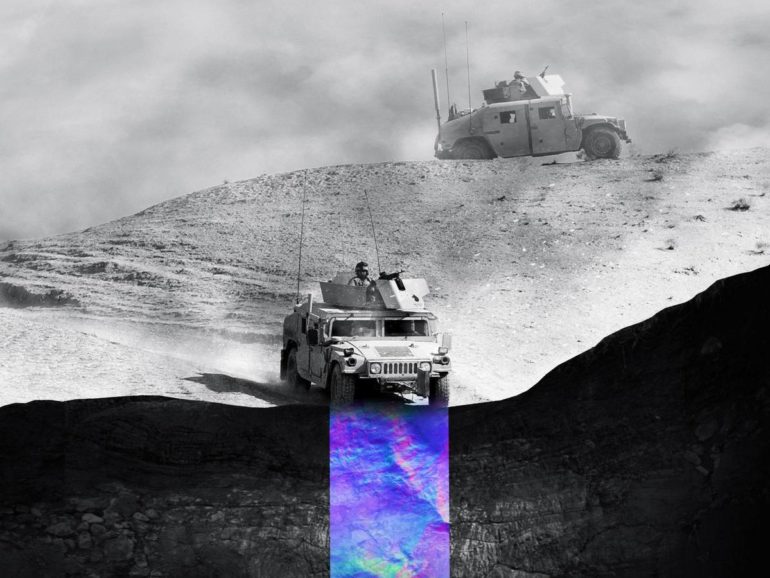While automakers and investors alike are placing big bets on autonomous vehicles, a remaining requirement for full-integration of AVs lies in automated technologies being able to operate in poorly-marked road surfaces, off-road terrain, and in inclement weather. By overcoming these last common obstacles encountered by traditional lidar and camera-based sensors, the industry will reach a critical step in the further development of ADAS and AVs that are both safe and reliable.
A technology called Ground Positioning Radar has shown incredible promise when it comes to reaching that final step. A company called WaveSense, is currently the world’s only provider of GPR for precise localization of autonomous and highly-automated vehicles, and the company recently announced a funding round of $15 million. WaveSense has become an integral company within the ADAS industry, having been awarded in 2019 the top autonomous driving project and best-in-show at the North American International Auto Show and last year appointed former Ford President, Joe Hinrichs, to the Board of Directors.
I wanted to know what the future holds for GPR, as well as the role the technology play in the crucial adoption phase of autonomous driving, so I reached out to WaveSense CEO Tarik Bolat.
GN: What’s the biggest sensing capability hurdle currently to broad adoption of autonomous vehicles?
Tarik Bolat: Current ADAS features enabled by lidar and camera-based systems for autonomous vehicles are accurate to a certain degree but lack the reliability to deliver a consistently safe journey. Common driving conditions such as inclement weather, debris in the road, lack of clear lane markings or strong GPS signals can render the typical sensors useless and force drivers to take over — sometimes with little notice — or in the case of an AV, disengage.
Considering these difficulties, there is a lack of consumer confidence in advanced ADAS capabilities, with a 2021 AAA survey reporting that 80% of drivers wanted “current vehicle safety systems, like automatic emergency braking and lane keeping assistance, to work better.” This indicates that while there is a market demand for these technologies, current offerings are not meeting customer expectations.
To meet the needs of today’s drivers, automated and autonomous vehicles need WaveSense’s ground positioning technology to help mitigate common issues, deliver automotive grade reliability, and increase consumer confidence in ADAS programs.
GN: How is GPR different from what’s out there in terms of capability?
Tarik Bolat: The issue with today’s ADAS technologies such as lidars and cameras is that they rely solely on visible, static surface features like signs, buildings, or lane markings amid dynamic environments that are not always predictable—resulting in features that are hamstrung by their unreliability. Ground Positioning Radar (GPR) technology differentiates itself by peering directly into the Earth, which is very rich in features and stable over long periods of time, and provides centimeter-level precise positioning anywhere no matter what the conditions are on the surface. By adding WaveSense’s GPR technology, automakers are enhancing their vehicles with more reliable and accurate ADAS features—including autonomous parking and active lane keeping—safeguarding the automated driving experience.
GN: Why hasn’t GPR been more broadly adopted in autonomous vehicle applications?
Tarik Bolat: While existing sensors like lidar and cameras seek to replicate human cognition, GPR is driving a shift in perspective of how to solve the thorniest problems in autonomy by leveraging data that isn’t available to the human eye. That’s a significant leap forward in how to conceive of solving the problem, and one that makes for additional customer education. WaveSense has been busy educating the market about this shift, and as a result is now working with some of the largest automotive companies in the world targeting high volume deployment of WaveSense’s GPR for ADAS and autonomous features.
GN: One of the interesting things about GPR is its application to off-road conditions. There are all sorts of military, commercial, agricultural, and even recreational implications there. What do you think will be the first applications of autonomous vehicle technology?
Tarik Bolat: Industrial applications with limited operating domains are a good bet for first implementations of fully autonomous vehicles — yards, ports, airside operations, etc. And we believe GPR is an essential part of the equation there, given those environments are typically less challenging from a perception perspective (relative to public roads) but arguably more challenging from a localization perspective since they’re often in settings without surface features, or with highly dynamic settings. That said, our focus is on delivering the highest impact in the largest market. Today, that means taking the ADAS capabilities on high volume vehicles that are currently considered performance features that are on-again, off-again depending on the road conditions and converting them into features that work all of the time.
GN: Realistically, how do you think GPR technology will be integrated into existing sensor stacks? How does it complement more broadly deployed sensor technologies?
Tarik Bolat: Integration of WaveSense is straightforward in that it delivers a robust position that the vehicle uses – akin to a GPS that has cm level accuracy nearly all of the time – making vehicle localization a reality even in the most challenging road conditions. What this means for automakers is that it can be the primary positioning sensor going forward and will be complemented by the other more standard sensors in the stack. And unlike cameras and lidar, which fail under similar circumstances, WaveSense is uncorrelated from any other inputs, driving new levels of robustness since the likelihood of a common point of failure becomes vanishingly small.



